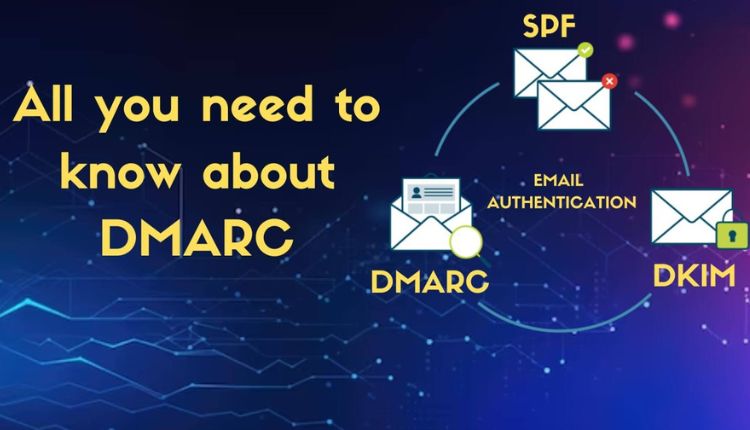
DMARC Setup: Ensuring Email Security with Confidence
In today’s digital landscape, email security is paramount for businesses and individuals alike. With the ever-evolving threat landscape, ensuring the integrity of email communications is crucial to safeguard sensitive information and maintain trust among users. One of the most effective methods to enhance email security is through DMARC setup. This comprehensive guide will walk you through the intricacies of DMARC setup, empowering you to fortify your email infrastructure and mitigate the risk of email fraud and phishing attacks.
Understanding DMARC
DMARC, which stands for Domain-based Message Authentication, Reporting, and Conformance, is an email authentication protocol that enables domain owners to specify how incoming emails should be handled if they fail authentication checks. By implementing DMARC, organizations can authenticate their emails, prevent domain spoofing, and protect recipients from fraudulent emails.
DMARC leverages existing email authentication mechanisms such as SPF (Sender Policy Framework) and DKIM (DomainKeys Identified Mail) to validate the authenticity of incoming emails. Through a combination of cryptographic signatures and domain alignment checks, DMARC enables domain owners to exert greater control over their email ecosystem and reduce the likelihood of email-based threats.
Key Components of DMARC Setup
DMARC Record Creation
- Setting up DMARC begins with creating a DMARC record in the DNS (Domain Name System) settings of your domain. This record contains policies and instructions for handling emails that fail authentication checks.
Policy Definition
- Within the DMARC record, domain owners can specify their preferred policies for handling emails that fail authentication. These policies include “none,” “quarantine,” and “reject,” each indicating varying levels of strictness in email handling.
Alignment Configuration
- DMARC enables domain owners to enforce alignment between the “From” header domain and the domains used in SPF and DKIM authentication. Alignment ensures that emails originate from legitimate sources associated with the claimed domain.
Reporting Mechanism
- One of the distinctive features of DMARC is its reporting functionality, which provides domain owners with insights into email authentication activities. DMARC reports offer valuable data on email delivery, authentication failures, and potential abuse attempts.
Gradual Deployment
- Deploying DMARC typically involves a phased approach, starting with a “monitoring” mode to assess the impact on legitimate email traffic before transitioning to enforcement mode. This gradual deployment strategy minimizes disruption while maximizing security benefits.
DMARC Setup: A Step-by-Step Guide
Implementing DMARC involves several steps to ensure seamless integration and optimal email security. Here’s a step-by-step guide to assist you in setting up DMARC for your domain:
Assess Current Email Infrastructure
- Before implementing DMARC, conduct a thorough assessment of your organization’s email infrastructure. Identify all authorized senders and email sources associated with your domain.
Generate DMARC Record
- Use DMARC record generators or consult with your IT department to create a DMARC record tailored to your organization’s requirements. Specify your preferred policies and reporting addresses within the record.
Publish DMARC Record
- Once the DMARC record is generated, publish it in the DNS settings of your domain. Ensure proper configuration to enable DMARC enforcement and reporting mechanisms.
Monitor DMARC Reports
- Regularly monitor DMARC reports to gain insights into email authentication activities and identify any anomalies or potential security threats. Leverage these reports to fine-tune your DMARC policies and enhance email security.
Gradually Transition to Enforcement
- Initially, deploy DMARC in “monitoring” mode to assess its impact on email delivery and authentication. Once confident in its effectiveness, gradually transition to enforcement mode to reject or quarantine unauthorized emails.
FAQs (Frequently Asked Questions)
How does DMARC enhance email security?
- DMARC enhances email security by enabling domain owners to authenticate their emails, prevent domain spoofing, and protect recipients from fraudulent emails.
Is DMARC compatible with existing email authentication mechanisms?
- Yes, DMARC works in conjunction with SPF (Sender Policy Framework) and DKIM (DomainKeys Identified Mail) to validate the authenticity of incoming emails.
Can DMARC be deployed gradually?
- Yes, DMARC deployment typically follows a phased approach, starting with a “monitoring” mode before transitioning to enforcement mode to minimize disruption.
What type of information do DMARC reports provide?
- DMARC reports offer valuable insights into email delivery, authentication failures, and potential abuse attempts, empowering domain owners to enhance their email security posture.
Are there any third-party tools available for DMARC implementation?
- Yes, several third-party tools and services offer assistance with DMARC setup, configuration, and monitoring, catering to organizations of all sizes and complexities.
How often should DMARC policies be reviewed and updated?
- DMARC policies should be reviewed regularly to align with evolving security requirements and business needs. Continuous monitoring and adjustment ensure optimal email security effectiveness.
Conclusion
In an era where email-based threats continue to proliferate, implementing robust email authentication measures is imperative to protect sensitive information and maintain trust among users. DMARC setup serves as a cornerstone of email security, offering domain owners the means to authenticate their emails, prevent fraud, and enhance overall security posture. By following the comprehensive guide and best practices outlined in this article, you can embark on your DMARC journey with confidence, safeguarding your organization against email-based threats and ensuring secure communication channels.




